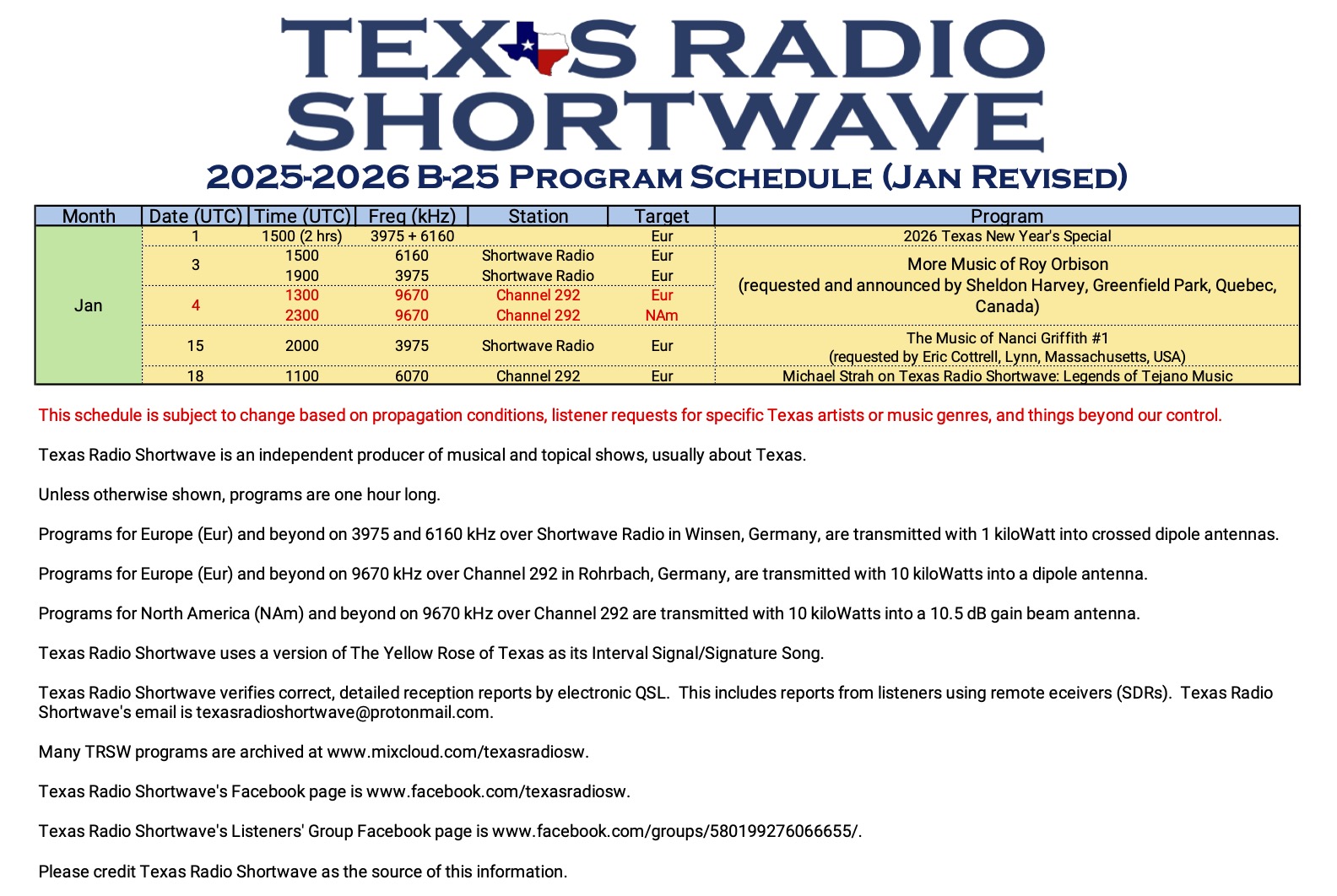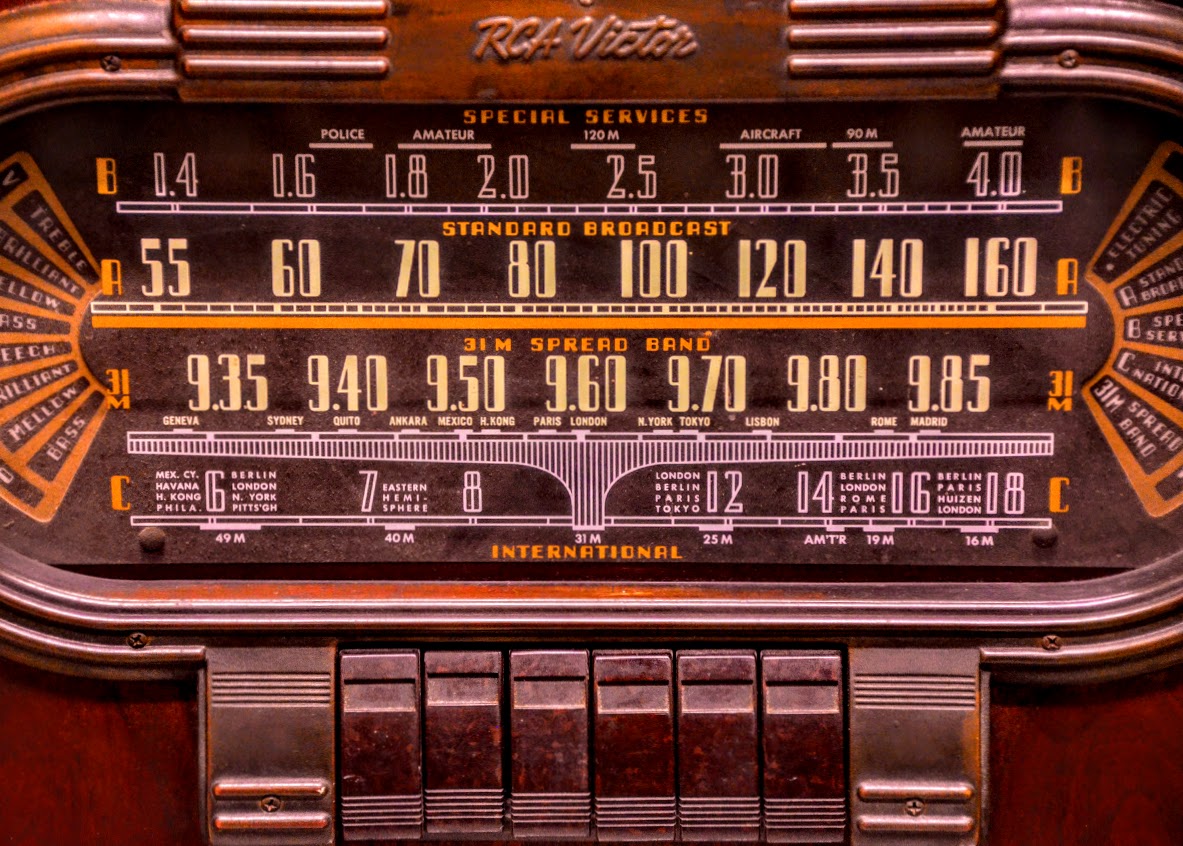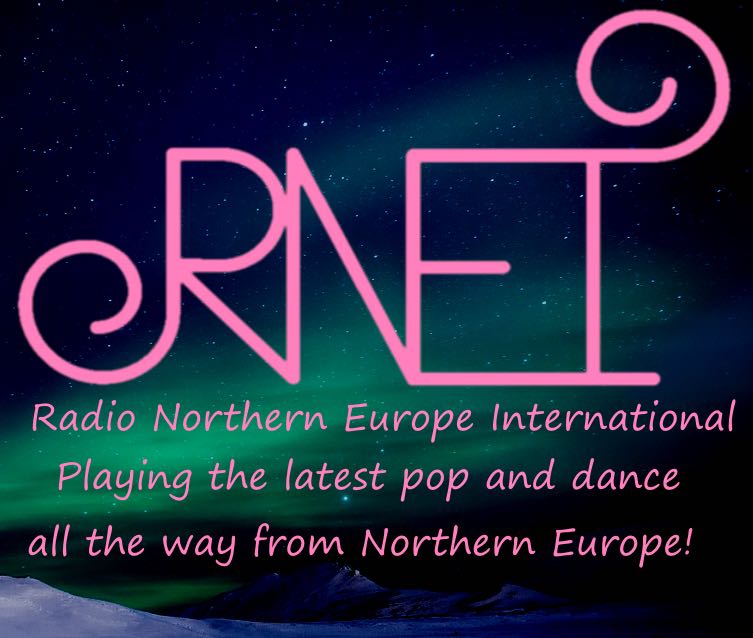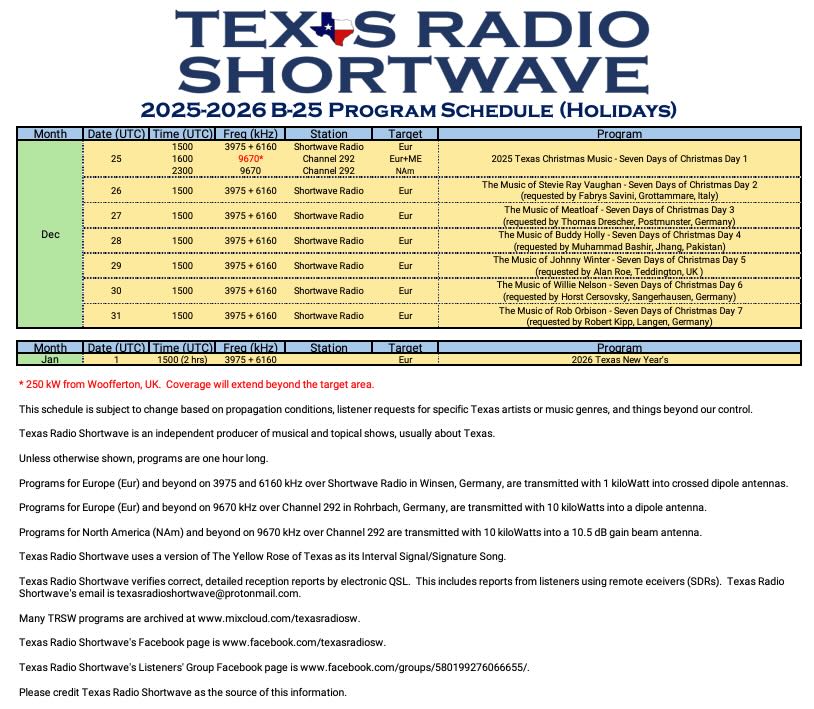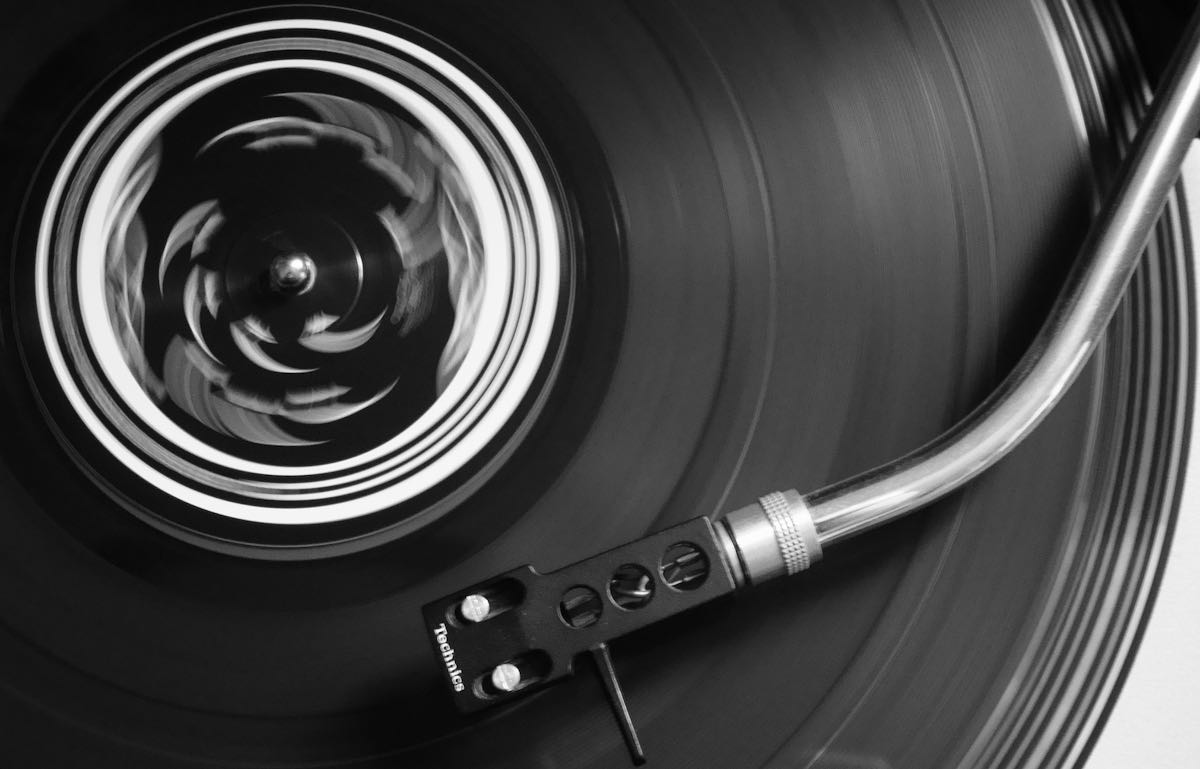 Many thanks to SWLing Post contributor, Alan Roe, who shares his B-25 (version 4.0) season guide to music on shortwave. Alan provides this amazing resource as a free PDF download.
Many thanks to SWLing Post contributor, Alan Roe, who shares his B-25 (version 4.0) season guide to music on shortwave. Alan provides this amazing resource as a free PDF download.
Click here to download Music on Shortwave B-25 v4.0 (PDF)
Alan has also created at-a-glance, single-page PDF programme grids for BBC World Service, CGTN Radio, Radio Romania International, Voice of Turkey, and Radio Taiwan International — all updated for the B-25 broadcast season and published last week. If you’d like to download these, visit Alan’s Box account here: http://tinyurl.com/shortwaveprograms
As always, thank you for sharing your excellent guide, Alan!
This dedicated page will always have the latest version of Alan’s guide available for download.

